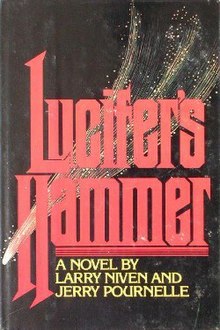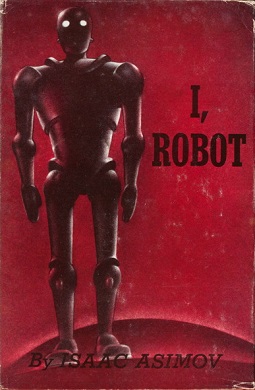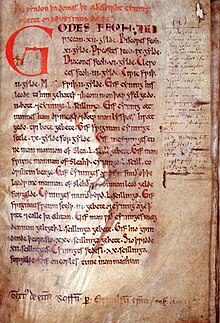
First edition
| |
| Author | Larry Niven Jerry Pournelle |
|---|---|
| Cover artist | Anthony Russo |
| Country | United States |
| Language | English |
| Genre | Science fiction |
| Publisher | Del Rey |
Publication date
| 1977 |
| Media type | Print (hardback & paperback) |
| Pages | 494 pp |
| ISBN | 0-87223-487-8 |
| OCLC | 2966712 |
| 813/.5/4 | |
| LC Class | PZ4.N734 Lu PS3564.I9 |
Lucifer's Hammer is a science fiction post-apocalypse / survival novel by American writers Larry Niven and Jerry Pournelle, first published in 1977. It was nominated for the Hugo Award for Best Novel in 1978. A comic book adaptation was published by Innovation Comics in 1993.
Plot summary
When wealthy soap company heir and amateur astronomer Tim Hamner co-discovers a new comet,
dubbed Hamner-Brown, documentary producer Harvey Randall persuades
Hamner to have his family's company sponsor a television documentary
series on the subject. Political lobbying by California Senator Arthur
Jellison eventually gets a joint Apollo-Soyuz (docking with Skylab B) mission into space to study the comet, dubbed "The Hammer" by popular media, which is expected to pass close to the Earth.
Despite the scientific community repeatedly assuring the public
that a collision with Earth is extremely unlikely, pieces of the comet's
nucleus impact across the western hemisphere with devastating results.
The strikes on parts of Europe, Africa, the Gulf of Mexico, and both the
Pacific and Atlantic Oceans set off volcanoes, destabilize fault lines,
including the San Andreas fault, and cause tsunamis
thousands of meters high, destroying major coastal cities around the
world, killing billions and initiating long-term climate problems due to
the massive quantities of vaporized seawater in the atmosphere.
Immediately after the strike, China, anticipating the coming ice age
launches a preemptive nuclear attack on Russia. The last Soviet Premier
reassures the US that they are not the target, and he requests help
against the unprovoked attack.
Jellison's ranch forms the center post of a fiefdom in the Sierra
foothills, dubbed "the Stronghold" where he presides over a small
population of survivors, including Randall and Hamner, who struggle to
maintain civilization.
Shortwave radio,
the only surviving means of mass communication, is eagerly monitored
and reveals a chaotic situation after the Fall. Several people,
including some who were previously officials of the former United States Government, claim to be the new or currently acting President of the United States, while others are now self-proclaimed monarchs
of various regions or areas. Many people subsist by looting former
stores and by catching rats and various fish, especially the
now-plentiful giant carp, which are mostly either former pet goldfish or their progeny, engorged by the massive supply of food available to them, primarily in the form of human and animal corpses.
Some advanced technical knowledge was maintained by the means of the
preservation of a collection of books which had been wrapped in
impermeable plastic and submerged in a septic tank
shortly after Hammerfall and later retrieved by a JPL scientist who
realized their potential value and likely scarcity in a post-Hammer
world.
Reverend Henry Armitage manages to take control of a cannibalistic group of petty thieves and the remnants of a former United States Army
unit, integrating them into his pre-existing band of followers, the New
Brotherhood Army. The Reverend's forces begin a rampage through the
area, culminating in a series of battles with the inhabitants of the
Stronghold. Jellison's force prevails with the help of chemical
weapons, saving the Stronghold while also defending a nuclear power
plant nearby, thus preserving a supply of electric power needed to
rebuild civilization.
Literary significance and reception
Niven
and Pournelle originally pitched the story to publishers as an alien
invasion story, wherein the aliens drop a comet onto Earth after
humanity fights them. Jim Baen told them to just write the comet story.
The original story idea was later written as their novel Footfall.
Judith T. Yamamoto in her review for the Library Journal
said that the novel was full of "good, solid science, a gigantic but
well developed and coordinated cast of characters, and about a megaton
of suspenseful excitement." Her one negative comment was that the
pro-technology pitch might turn off some readers but "all in all it's a
good book, if not a great one." Lucifer's Hammer received a nomination for the Hugo Award for Best Novel in 1978.
C. Ben Ostrander reviewed Lucifer's Hammer in The Space Gamer No. 13. Ostrander commented that "I recommend this book [...] Don't miss it for a long, interesting story."

Cover of first edition (hardcover)
| |
| Author | Larry Niven and Jerry Pournelle |
|---|---|
| Cover artist | Michael Whelan |
| Country | United States |
| Language | English |
| Genre | Science fiction |
| Publisher | Del Rey Books |
Publication date
| May 12, 1985 |
| Media type | Print (hardback & paperback) |
| Pages | 495 pages (first edition, hardcover) |
| ISBN | 0-345-32347-5 (first edition, hardcover) |
| OCLC | 11316829 |
| 813/.54 19 | |
| LC Class | PS3564.I9 F6 1985 |
Footfall is a 1985 science fiction novel by American writers Larry Niven and Jerry Pournelle. The book depicts the arrival of members of an alien species called the Fithp that have traveled to the solar system from Alpha Centauri in a large spacecraft driven by a Bussard ramjet. Their intent is conquest of the planet Earth.
Plot
The
alien Fithp resemble baby elephants with multiple prehensile trunks.
They possess more advanced technology than humans, but have developed
none of it on their own. In the distant past on their planet, another
species was dominant. This predecessor species badly damaged the
environment, rendering themselves and many other species extinct, but
left behind their knowledge inscribed on large stone cubes, from which
the Fithp have gained their technology. Facing possible extinction due
to the long-term effects of biological weapons, a group of high-ranking
Fithp were selected to escape to the stars. The Chtaptisk Fithp ('Traveling Herd') are divided between 'Sleepers' and 'Spaceborn', as the ship is both a generation ship and a sleeper ship.
The original leaders are subordinate to the Spaceborn, who are prepared
to start a space based civilization, but are still dedicated to the
generations-old ideal of conquest.
The Fithp are herd
creatures, and fight wars differently from humans. When two herds meet,
they fight until it is evident which is dominant; fighting then ceases
and the losers are incorporated into the winning herd. The Fithp are
confused by human attempts at peaceful contact. Upon arrival, they
attack the Soviet space station (the Soviets still being a major world
superpower) where Soviets and Americans wait to greet them. They proceed
to destroy military sites and important infrastructure on Earth. United States Congressman Wes Dawson and several Soviet cosmonauts are captured from the ruins of the space station.
The human characters fall into two major groups, those on Earth
and those who are taken aboard the Fithp spaceship as captives.
Civilians are used to show the effects of the war on day-to-day life in
the United States, while military and government personnel convey a more
strategic overview of events. Science fiction writers are employed as
technical advisers on alien technology and behavior; the characters are
based on real writers, including Niven ("Nat Reynolds"), Pournelle
("Wade Curtis"), and Robert Anson Heinlein ("Bob Anson").
After their initial assault, the Fithp land ground forces in the center of North America, primarily in and around Kansas. They initially repel attacks with orbital lasers and kinetic energy weapons, but a combined Soviet and U.S. nuclear attack
wipes out their beachhead. The Fithp, who are familiar with nuclear
weapons but prefer to use cleaner ones, are shocked by what they
consider the barbarity of humans' willingness to "foul their own garden" with radioactivity. The Fithp respond to the defeat of their invasion by dropping a large asteroid into the Indian Ocean, whose impact
results in environmental damage on a global scale, in particular the
almost total destruction of India. The Fithp then invade most of Africa,
successfully subjugating most of the people on the continent. On
numerous occasions, the Fithp are assisted by warlords seeking to keep
their power over the masses.
The U.S. secretly builds a large, heavily armed spacecraft in the State of Washington propelled by nuclear bombs (a real concept known as Project Orion). The ship is named after the Biblical Archangel Michael, who cast Lucifer out of Heaven. The Michael
launches and battles through small enemy "digit" ships in orbit.
Though seriously damaged, she pursues the alien mothership. One of the space shuttles carried aboard Michael rams the Fithp ship, seriously damaging it.
On Earth, U.S. President David Coffey receives an offer of
conditional surrender from the Fithp. Coffey is willing to let the
Fithp withdraw into space, and is reluctant to destroy their technology
and cargo of females and children. He is opposed by his advisors, who
feel that by allowing the Fithp to escape and regroup, he risks the
whole of humanity. When Coffey seemingly folds under the pressure, National Security Adviser Admiral Carrell stages a bloodless coup d'etat,
circumventing the President and communicating the rejection of the
aliens' terms. An act of sabotage by the humans aboard the alien vessel
disables the Fithp engines, allowing the Michael to inflict
heavy damage, which forces the Fithp to accept humanity as the stronger
species and surrender themselves to become part of the human "herd". In
the final scene, the Fithp leader lies down on his back in a submissive
gesture, and allows former captive Congressman Wes Dawson to place his
foot on his chest, this being the formal Fithp gesture of surrender.
Timeline
- c. 1915: The Chtaptisk Fithp ("Traveler Herd") leave Alpha Centauri for Earth on their spacecraft, the Thuktun Flishithy ("Message Bearer").
- c. 1919: The sleepers go into their death-sleep.
- September 1976: Thuktun Flishithy swings around the Sun, maneuvering towards Saturn.
- November 1976: Thuktun Flishithy reaches Saturn.
- June 1980: Thuktun Flishithy has been resupplied.
- June 1981: The Fithp have established themselves on the Foot, an asteroid colony.
- April 1995: The Thuktun Flishithy begins its journey towards the Earth.
- May 1995: Human astronomers in Hawaii realize that there is an alien ship on a trajectory towards the Earth.
- June 1995: The initial attack of the Fithp. Kinetic weapons wreak havoc on the Earth, and satellites are shot down; the Soviet space station Kosmograd is destroyed, and its surviving passengers captured.
- July 1995: The Fithp launch an invasion of Kansas. Shortly thereafter the Jayhawk Wars begin, a conventional attack against Fithp forces which is rapidly destroyed using space support. About two weeks later, the Americans and Soviets cooperate in a combined nuclear retaliation that defeats the Fithp forces and wrecks much of Kansas in the process.
- August 1995: Footfall. The Fithp drop the Foot into the Indian Ocean; tsunamis devastate surrounding landmasses, while the entire globe is enveloped in an endless salty rainstorm. India is practically destroyed, while the Fithp successfully invade much of Africa.
- July 1996: The flight of the Michael; ends with the formal surrender of the Chtaptisk Fithp to US Congressman Wes Dawson.
Reception
Footfall was nominated for the 1986 Hugo Award for Best Novel and the 1986 Locus Award for Best Science Fiction Novel, and was a No. 1 New York Times Bestseller.
Kirkus Reviews
considered it to be "(o)verblown and largely underdone", judging it to
be "more tedious and less thoughtful" than previous joint
Niven–Pournelle works, with "barely relevant" subplots and a "cumbersome
cast of thousands", but praising the fithp society as "particularly
well worked-out".
David Langford called it a "ripping yarn", but stated that it had "typical blockbuster
flaws", including slow pacing and an overly large cast with
less-than-relevant characters; he also noted that "(t)he authors'
enthusiasm for space weaponry comes over disturbingly strongly". James Nicoll
found it to have "the mediocrity and tedium of a much longer novel",
with weak characterization, and a scientifically inaccurate portrayal of
the effects of the asteroid's impact, but conceded that it was better
than the majority of works in its subgenre, and commended Niven for his
portrayal of the fithp.


